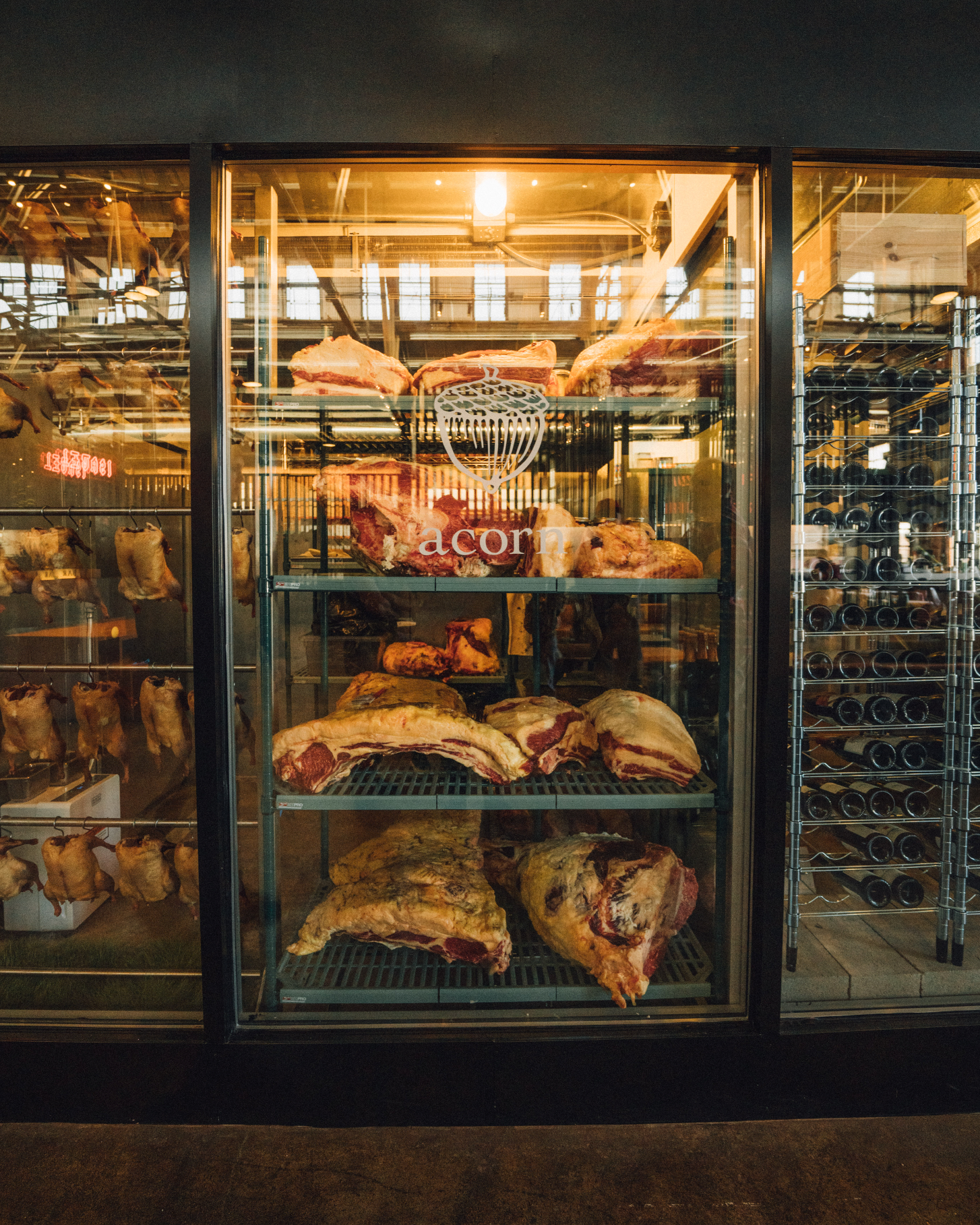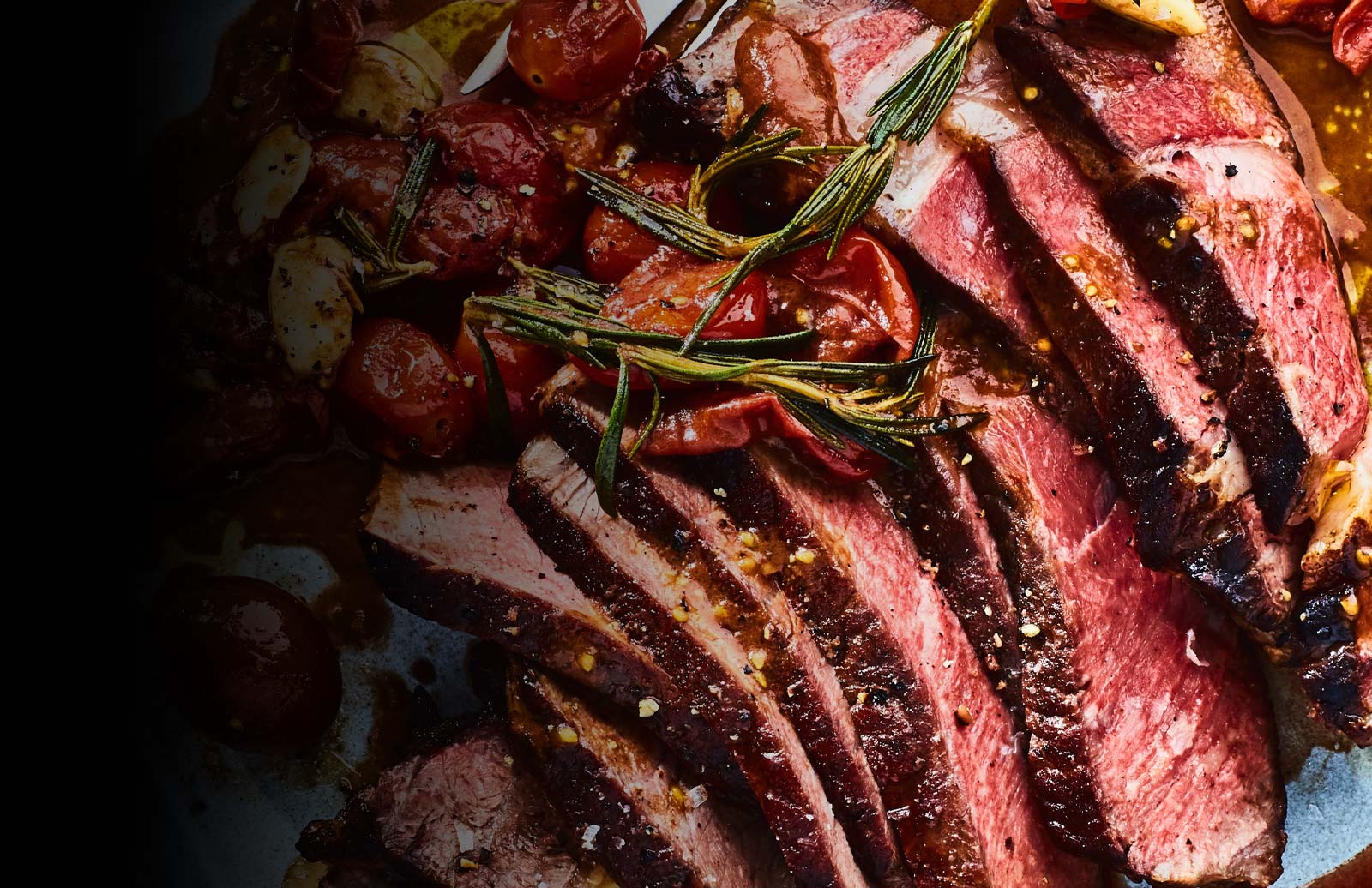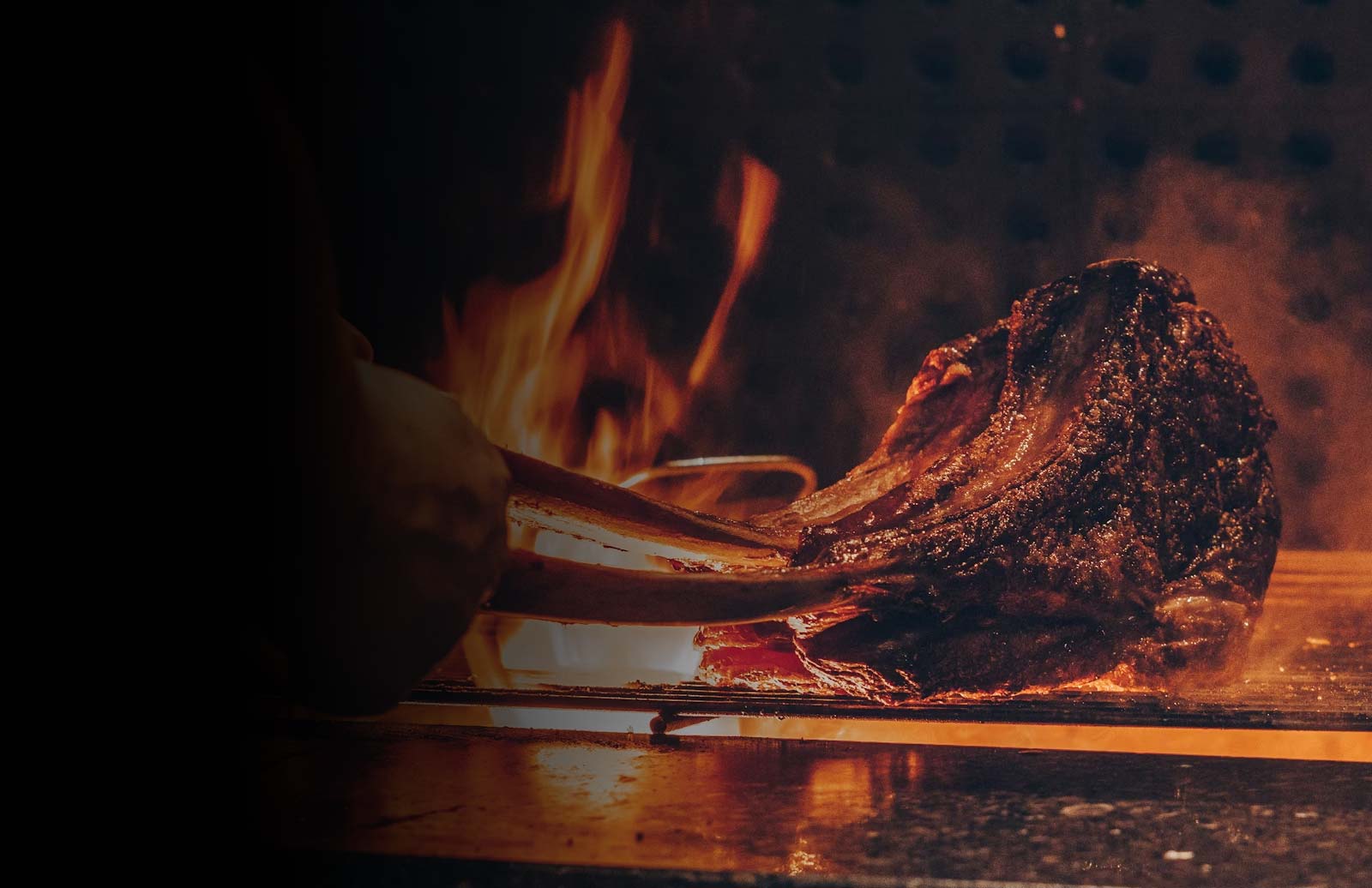
What is Dry-Aged Beef?
Dry-aged beef is gaining in popularity among chefs and eaters alike. Steakhouses around the world feature dry-aged steaks as an integral part of their meat-based menus. The tender, rich quality of dry-aged steaks is legendary among carnivores, and its concentrated beefy flavor cannot be imitated. Dry-aging is a controlled process whereby large sections of the animal, called “primal” muscle groups (for example, an entire rib section, as opposed to just one ribeye steak) are exposed to air over a period of time in a regulated environment at a specific and controlled temperature, airflow and humidity. The process of dry-aging has two effects: first, dry-aging results in water loss. This reduction of moisture has the result of concentrating the flavor of the beef. This means that dry-aged steaks lose up to 30% of their mass during dry-aging, but what remains is more flavorful than a larger conventional steak. The additional benefit of dry-aging is that over time, enzymes in the beef begin to break it down naturally, resulting in steak that is more tender than its fresh counterpart. The outcome is savory, supple, flavor-rich and surprisingly tender beef that is preferred by chefs, butchers, and steak connoisseurs around the world.
What is Double-Aged Beef?
Our beef is not only dry-aged carefully for a minimum of two weeks after processing, but we also raise our cows to an older age in life, at least four years. In contrast, conventional, industrially-raised, corn-fed beef is slaughtered as young as six months old, before it has time to develop a mature flavor, and the lack of movement of cows confined in feedlots prevents the development of flavorful locomotion muscles. In addition, conventional beef is forcibly fattened quickly (“finished”) which means that the fat it develops is concentrated in certain places — you’ll notice that supermarket beef often has a thick, white fat cap on the outside of the muscle, with clumps of white fat sporadically within the muscle. In contrast, our mature, grass-fed cows are allowed to naturally fatten on grass over years, resulting in gorgeous, golden flecks of omega-rich fat distributed evenly throughout the steak (we often get a nice, flavorful golden fat cap too!). This slowly-developed, intramuscular fat is highly desirable and also seen in expensive, coveted Wagyu steaks (though those cows are not grass-fed). We at Carter Country proudly call this spectacular speckling of yellow fat our “grass-fed gold.” The flavor of both the rich, deep-red meat, the result of dry-aging, and the gorgeous golden fat, the result of live-aging, is incomparable and unforgettable.

Is All Grass-Fed Beef Dry-Aged?
It takes time, years in fact, for cows to fatten on grass, and most grass-fed beef you’ve seen is likely quite lean, and young. You may find sinewy cuts of local grass-fed beef at your local butcher shop, but most grass-fed beef is not dry-aged. This means most grass-fed beef is tough in texture and gamey in flavor. In contrast, our double-aged, grass-fed beef is uniquely tender and rich, boasting a gorgeous flecking of golden fat. The first “aging” — allowing our cows to live longer — results in nutrient-rich beef that is allowed to fatten naturally on grass. The second “aging” — the process of dry-aging primal cuts — results in beef that is even more tender and flavorful. While you may think of grass-fed beef as lean, gamey, and tough, our flavorful, tender, double-aged beef is sure to change your mind about grass-fed beef.

Is Corn-Fed Beef Dry-Aged?
Conventional, corn-fed beef is tender, but not because of age. Conventional beef is tender for two reasons: the cows are young, and they are not allowed to move. Their young age and lack of muscle development results in beef that is soft, almost mushy. The flavor is bland from their restricted, unnatural diet. Conventional cows are raised this way to please the American taste for mild, tender beef. Beef from conventional cows is not typically dry-aged. Dry-aging is a process reserved for high-quality beef, as it requires an investment in time, space, and money — not to mention the investment of raising grass-fed, older, humanely raised cows in the first place.

Why Older Cows?
Young cows, like young kids, are naturally lean. Cows, like humans, don’t develop fat until an older age, unless they are intentionally, intensively fattened with an unhealthy diet and injections of growth hormones. That is what happens at feedlots. Conventional beef is “harvested” as young as six months, yet cows can easily live to be over 20 years old. As Neil Genzlinger noted in his New York Times review of the beef documentary “Steak Revolution, “most cattle don’t get past the age of two. American beef comes mostly from steers and heifers slaughtered between 18 and 24 months old.” They are young juveniles, practically babies, fattened and killed as quickly as possible to result in a faster paycheck for the conventional rancher, with little concern for the health of the cow or the consumer. In contrast, we at Carter County allow our cattle to live long, rich, natural lives, so they can fatten slowly and naturally on their diverse diet of natural grasses to nourish your family with the nutrient-rich result of our labor of love. Our double-aged process requires more land, more time, and more resources, but the resulting beef is undeniably richer, more complex, more flavorful. Our double-aged process is healthier for the cows, healthier for the land, and healthier for you and your family. You’ll also find that the flavor of these older, live-aged cows is complex, rich in terroir, with that “grass-fed gold” fat that melts in your mouth. Then, our dry-aging process ensures that the beef from our older cows is more tender than many cuts from conventional, young cows. Our double-aged beef is completely unique — it’s a process so new we had to invent the term “double-aged beef!”

How to Enjoy Dry-Aged Beef
Carter Country beef is dry-aged a minimum of 14 days. Our double-aged beef is a deep, rich red color, with a denser, firmer texture that may take more chewing, but will eventually melt in your mouth, revealing a complex and layered terroir. Eat smaller pieces and chew thoroughly, taking the time to enjoy each bite and let it break down naturally — it will! Due to the concentrated nature of our steaks, we recommend cooking medium-rare to medium. Avoid overcooking, which will result in a tough steak. Don’t worry — when you receive your Big Horn Box from Carter Country, you’ll find information on all the cuts of steak and how we recommend cooking them to perfection.



